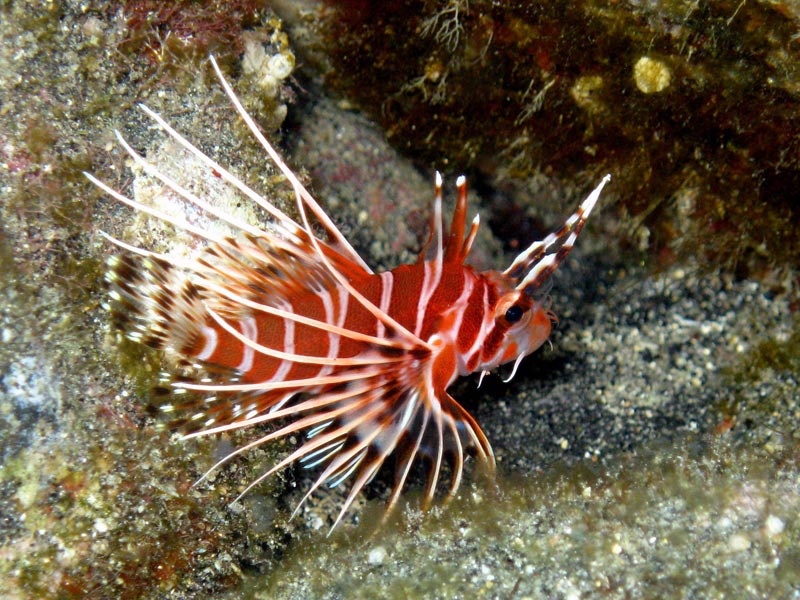Hawaiian Lionfish
nohu pinao
Pterois sphex
Scorpionfishes are slow-moving or sedentary carnivores, and many have venomous spines. Some are camouflaged masters, while others have distinct colors and enlarged fins that heighten visibility. Most scorpionfishes are hard to detect, because they rely on dull and mottled coloration so they won't be noticed. Only when threatened do they show their bright colors and display their venomous spines. The spines are like an injection of poison once it enters the victim. It is possible to mistake them for rocks while exploring the reefs. There are 25 species of Scorpionfish in Hawai'i. In ancient Hawai'i, it was believed that the eggs of some nohu hatched into sharks.
Lionfish are majestic as they glide slowly over the reef. Their fanlike fins help corner small fishes or crustaceans, and they can also be used to brush the ocean's bottom and stir up creatures that live there.
The Hawaiian Lionfish is striped red and white with long dorsal spines and immensely extended white spines on the pectoral fins. This species is specific to Hawaiʻi even though it is similar to appearance to other Indo-Pacific lionfish. By day, lionfish stay under caves and ledges, usually on the ceiling. At night they hunt for crabs or shrimps and extended their fins while gliding through the water. If you're lucky, you may see them swimming freely in the late afternoon or early morning. Do not play or handle these fish, because their spines are venomous. It is also known as the Hawaiian Turkeyfish, and the species name means "wasp". The Hawaiian name means "dragonfly", and they are endemic to Hawaii.
